Companies and brands spend millions every year on advertising. The global spending on advertising in 2020 was 674 billion U.S. dollars. In fact, statistics show that in America, a dollar is spent on advertising per person each day. Sometimes, we might be so used to seeing ads we don't even realize we're being sold something.
Nowadays, there are a lot of rules about what's appropriate in an ad and what's not. Back in the day, almost everything was fair game. That's why there were loads of sexist, racist, tobacco, asbestos, and lead-praising ads. We've compiled the most absurd vintage ads for you here. Enjoy and wonder: "How could this have been a thing?"



The ad advises getting rid of batteries by tossing them in the fireplace, but we know now that doing that is extremely dangerous.
beerbellybegone Report
Many products advertised in these vintage ads seem questionable today. However, people did many questionable things back in the day: advised pregnant women to smoke to relieve stress, gave babies alcohol to make them sleep better, and many others.
But the ads praising harmful materials like lead and asbestos probably take the crown of absurdity. How is it possible that marketers advertised them as "amazing" and people thought it was okay?
Back in the late '70s, people used asbestos in many common household and construction items: hair dryers, kitchen appliances, plumbing, floors, and, of course, roofs.
Today, it's still used for occupational gear and clothing, but most countries have banned many different forms of asbestos. The U.S. banned the last type, chrysotile asbestos, in 2024.



The material was (and still is in some countries) popular due to its durability and fire resistance. It's also pretty affordable. However, microscopic asbestos fibers are incredibly dangerous to our lungs.
They cause healthy lung tissue to scar or mutate asbestosis, mesothelioma, and lung cancer. In fact, it's classified as a known human carcinogen by The U.S. Department of Health and Human Services.
But why were the ads for asbestos so popular back in the second half of the 20th century? Apparently, industry leaders did their best to suppress any medical evidence linking asbestos to all the above-mentioned horrible diseases.
Advertisers positioned the toxic material as something futuristic and affordable for home makeover projects. And the flashy, fun commercials and ads got to people -- they really believed this was the natural mineral of the future.

This was from the year 1982, when the photography company said "We shoot school kids" in an ad before the number of school shootings in the US increased.
ethanlgraham Report


Similarly, people once saw lead as a miracle metal as well. Most of us probably know about the dangers of lead in paint. In the 20th century, white lead paint was incredibly popular. Because it absorbs 12 to 15 times less water than zinc oxide, it is very durable. Back in the 1910s, the authorities advised people to wash their walls regularly because of the Spanish Influenza. So, lead paint was particularly handy in that regard.



Even the numerous state and federal agencies urged people to use lead paint. What changed their tune was the growing number of lead poisoning cases in children in the 1930s. The authorities advised parents not to use the paint on toys, baby carriages, and cribs.



However, children would still get poisoned from the paint on the walls. The government only took serious action in the 1970s, though. Lobbyists and advertisers did their best to mislead people and make them believe it was not as toxic. Today, we use lead in batteries; three-quarters are actually found in all types of vehicles.

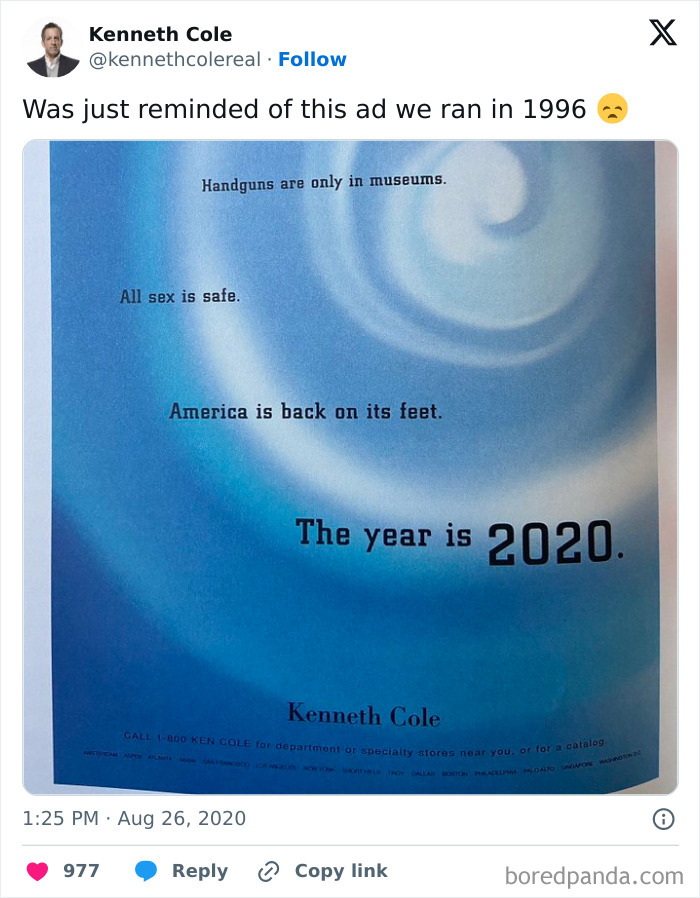

Interestingly, the Romans used lead in more ways than the modern 20th-century society. They lined aqueducts and water pipes with lead and also put it in makeup, cookware, and even contraceptives. Perhaps the most surprising use of lead in Ancient Rome was as a sweetener for food and drinks but also to control fermentation in wine. That's actually why kids sometimes chewed on lead paint chips: it can taste sweet.

The ad compares buying lighter ski equipment to "Losing the Twin Towers," which eventually happened on 9/11, about 7 years after this was published.
22FlyingTurtles Report


Today, we're way more careful about the way we handle lead. The batteries get assembled in sequestered plants, with employees wearing face masks. The majority of the work is also done by robots.
Steven Jones, plant manager at EnerSys, told NPR that the manufacturing process is a technological ballet. "Through this level of automation, we're providing a cleaner environment for our operators and again, providing a safer environment."



Cigarette companies also don't have a good track record when it comes to advertising. A 1946 Camel ad, for example, claimed that doctors, according to an "independent survey," recommend smoking.
An even more crazy 1890 advertisement claimed that cigarettes can help treat asthma and other respiratory ailments. They even recommended giving them to kids older than six. Many similar ads touted the benefits of smoking: less irritation, child-friendly, and one even claimed cigarettes were "pure as the water you drink."

The 1984 Bhopal gas tragedy at the Union Carbide India Limited (UCIL) pesticide plant in Bhopal, Madhya Pradesh, India. It is considered one of the world's worst industrial disasters. The parent company had to sell its entire stake in UCIL and leave India.
JStevinik Report


Olympic Athlete Jesse Owens was the face of White Owl cigars in 1960. Sadly but ironically, he passed away from lung cancer in 1980. The first serious report warning the public about the dangers of smoking came out in 1962.
In 1964, the U.S. Surgeon General did the same. The U.S. government first took action in 1965, requiring manufacturers to include information for consumers about the dangers of smoking on the label.



This is an advertisement for a child to purchase a toy rifle, touting its realistic look and sound. A child carrying this toy today would be very poorly received.
Taitenger Report
All these examples from the past can make one wonder: weren't there any policies against false advertising back in the day? Not really, at least until the 1970s. People's mistrust of advertising was rising by then.
That's when the FTC also started a regulation revolution -- at last, they were asking marketers to prove the validity of their claims. They also cracked down on advertising toward children. Whereas advertisers enjoyed their unchecked privilege before, now they have more responsibility.






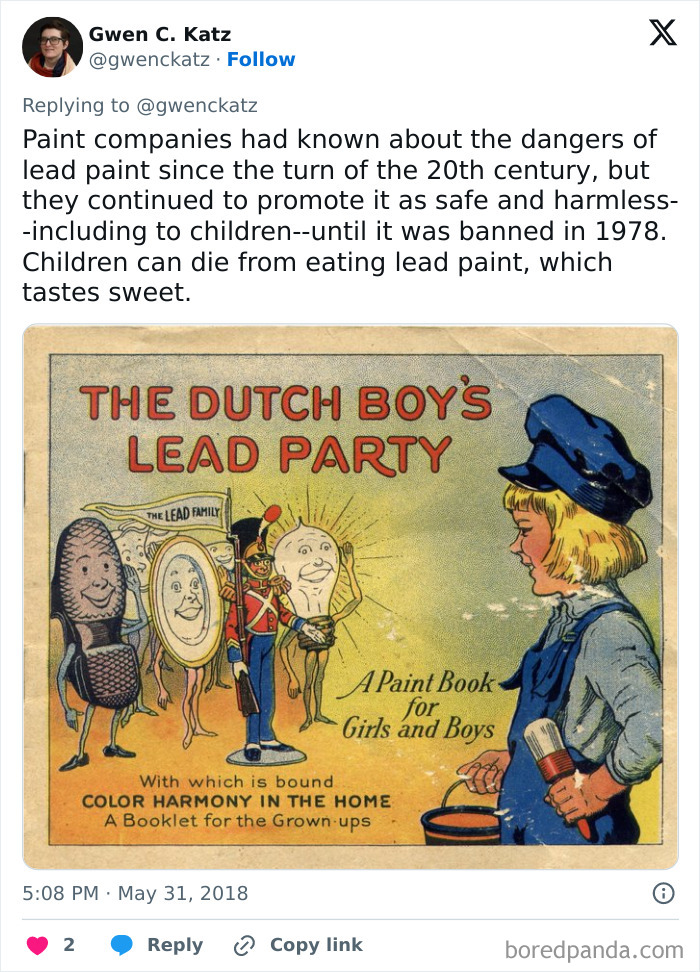

Lysol used to be used as a means of birth control before the pill was legalized in the 1960s. That's what they mean by "dainty feminine allure," having the energy to be a loving wife without the babies.
nacreous Report

Terrible advice on how to dig a hole in your garden to dispose of engine oil and let it be absorbed into the soil.
reddit.com Report
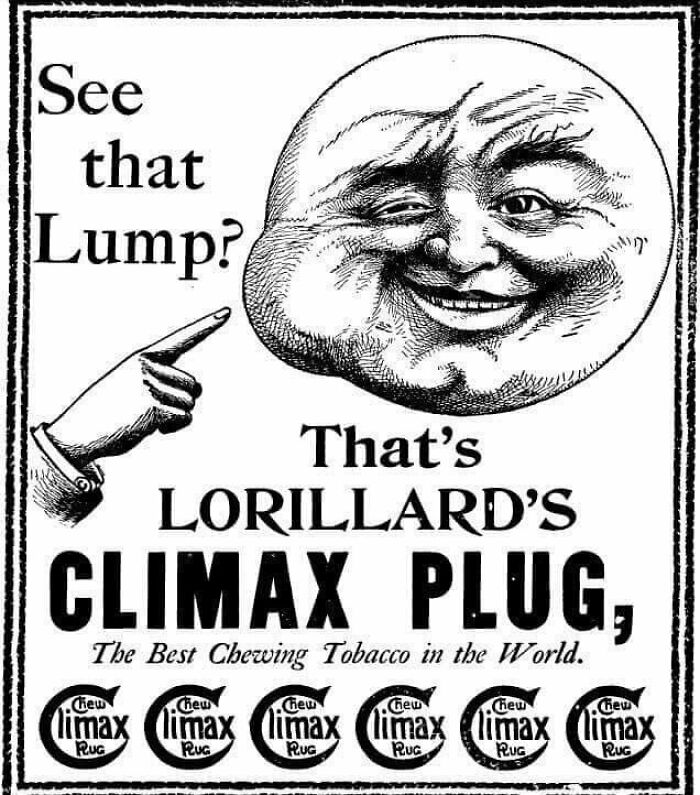



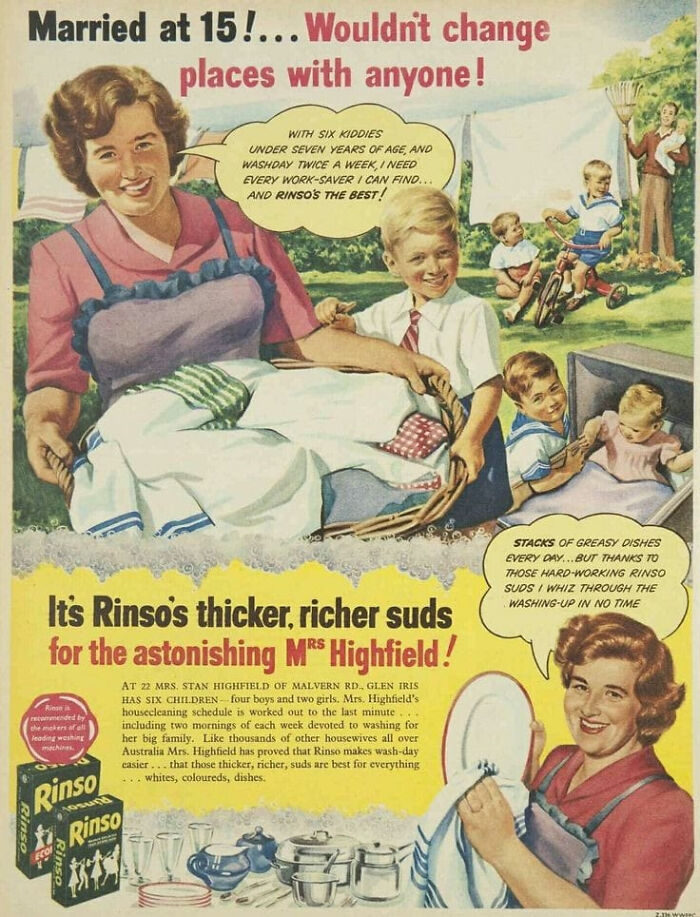



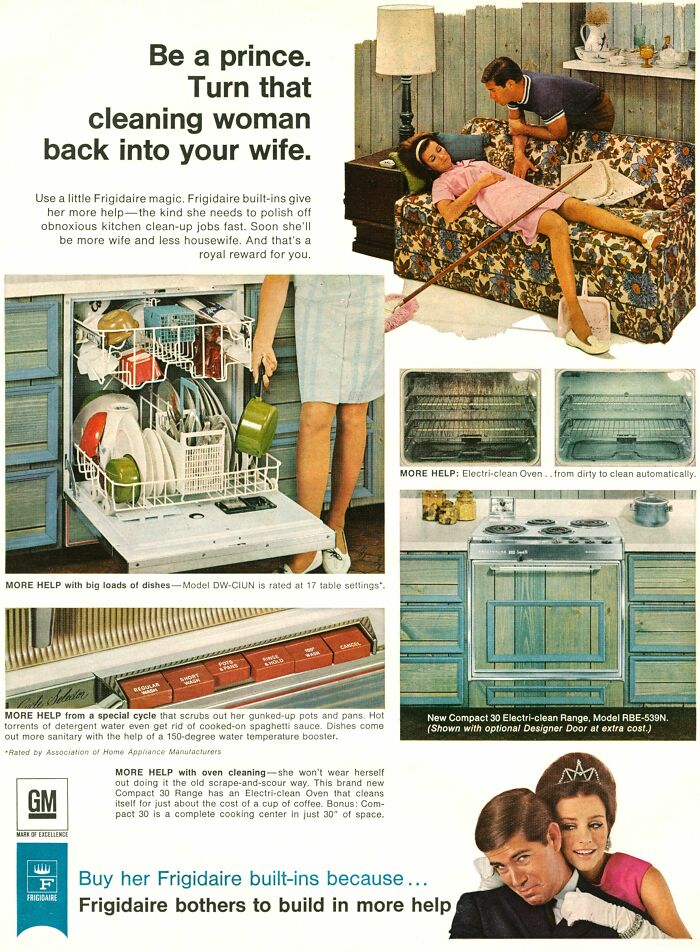


Note: this post originally had 99 images. It’s been shortened to the top 50 images based on user votes.